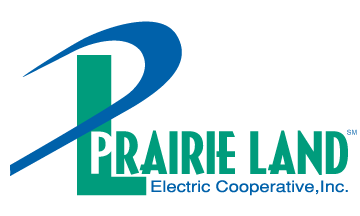Why ha$ my electric bill increa$ed?? I haven’t touched my thermo$tat!!
If this is your recent reaction when opening your electric bill, you are not alone. As your fellow members of Prairie Land Electric, we too are paying higher electric bills this summer. When electricity prices rise, our bills are impacted in the same way.
We know having others FEEL your pain doesn’t take AWAY your pain. And while we can’t take away the pain of your higher bill or ours, we can explain the reason behind them.
It’s been a scorcher.
You’ve no doubt recognized this summer has been much hotter than last summer. Last summer, Prairie Land Electric members in Norton, for example, experienced 13 days above 100 during June, July and August. This year, as of Aug. 16, 2022, they have already had 28 days above 100 degrees.
During extreme temperatures, whether bitterly cold or scorching hot, we rely more on our heating and cooling units to stay comfortable, and that consumes more electricity. Specifically, when outside temperatures become higher than 100 degrees or there is more than a 20-degree difference between the inside and outside temps, air conditioners consume considerably more energy.
Record high demand causes increased prices.
Prairie Land Electric purchases wholesale energy from Sunflower Electric Power Corporation, which is a member of the Southwest Power Pool (SPP). The SPP oversees, manages, and balances the dispatch of energy based on reliability and economics across a 14-state region. In essence, the SPP gauges how much energy will be needed, and orders generation to meet that demand. They pull from the cheapest resources first and call on more expensive forms of electrical generation as it is demanded.
Electricity, as well as the fuel that generates it, is a commodity that is affected by supply and demand economics. This summer, extremely hot weather conditions have caused a greater demand for electricity. In fact, on July 19, the SPP experienced a record high demand for energy at 53,243 MW. Increased demand on the electric grid requires less efficient power plants to operate along with the more efficient baseload plants that normally serve load to meet consumer needs. The combination of higher fuel prices and decreased power generation efficiency leads to higher prices for electricity.
One of the reasons energy costs vary is the cost of fuel and purchased power. The costs for fuels, such as natural gas, which are needed to operate power plants, fluctuate from day to day. The cost of electricity purchased from the Southwest Power Pool wholesale energy market also fluctuates hour by hour due to several factors. When the cost of power goes up at the same time a person is using more energy, it can seem like the effect is doubled.
Electric cooperatives do not mark up, make a profit or take a loss on the costs of fuel and energy purchased from the market. Prairie Land Electric uses the Power Cost Adjustment (PCA) on your bill as a mechanism to recover or reimburse these fluctuating costs to remain financially whole.
Fuel diversity is important.
With the current market conditions, Sunflower’s coal-based unit at Holcomb Station generates energy at a lower cost than natural gas. However, due to coal shipping interruptions caused by railroad staffing issues, Sunflower curtailed energy production from the unit and pursued replacement energy products that were more expensive than energy produced at Holcomb Station.
The Dog Days of summer are notorious for being hot and still. Though Kansas has its windy days, those days are less common during July and August. Just when we need wind energy the most, we usually have it the least. Such was the case this summer when wind production in July was down 15.5% from June and 33% from April. Sunflower recently added 20 MW of solar generation at its Johnson Corner Solar Project. Stable-priced solar energy helps moderate electricity prices during the sunniest and hottest parts of the summer when electricity demand is at its highest. Sunflower is pursuing additional solar energy projects to enhance this impact on summer energy prices.
All of these factors contribute to the PCA on our member’s bills, adding more charges than we have become accustomed to. More than 70% of the time over the past few years, the PCA has resulted in a credit to each bill. However, the July PCA on the August bill was approximately 1.5 cents per kWh, and August’s PCA on the September bill could be even higher if weather conditions continue to be the same as the first half of the month.
We’re here for you.
We can’t stop Mother Nature from doing what she does, and we can’t change the principle of supply and demand. We can assure you that we are always looking for ways to help our members, who are also our neighbors. For more information about your bill and energy efficiency/saving tips, please give Prairie Land Electric a call at 1.800.577.3323 or visit PrairieLandElectric.com.

